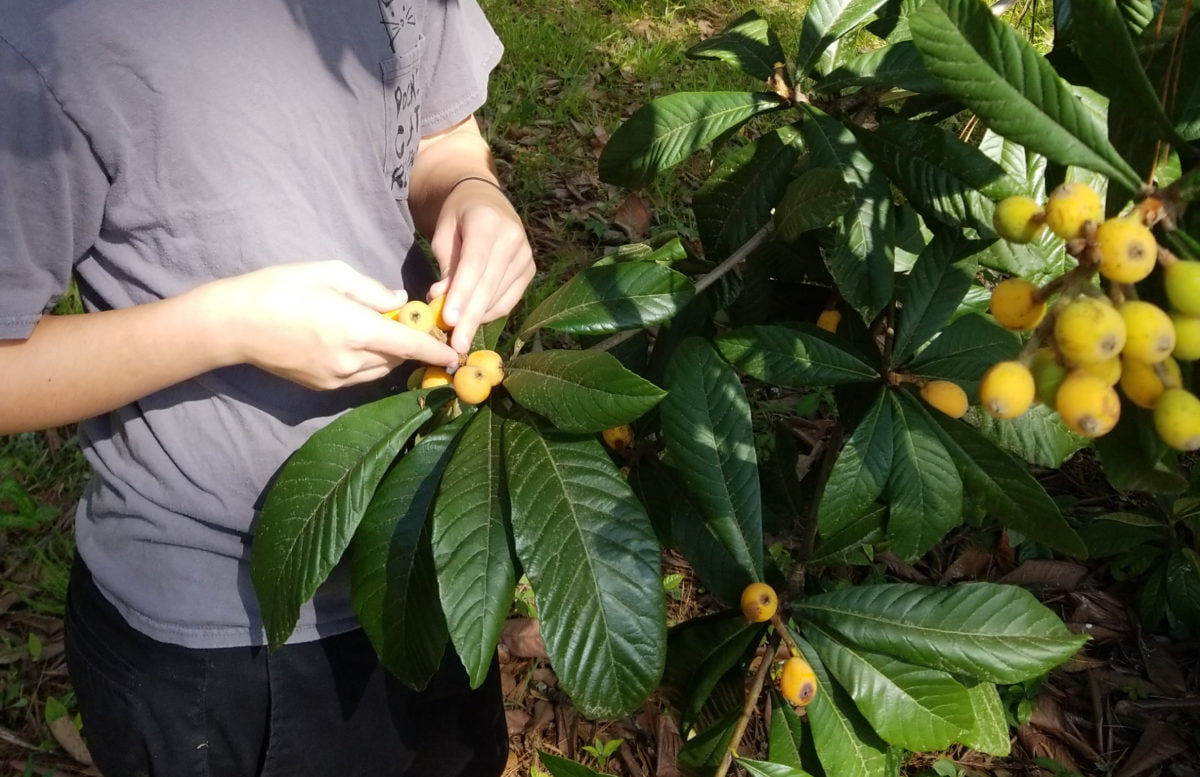Eriobotrya Japonica
Other common names: Japanese Plum,Japanese medlar, nispero japones (Spanish), ameixa do Japao (Portuguese), luju (Chinese), lokwat (Maylay and Indonesian)1
Identification
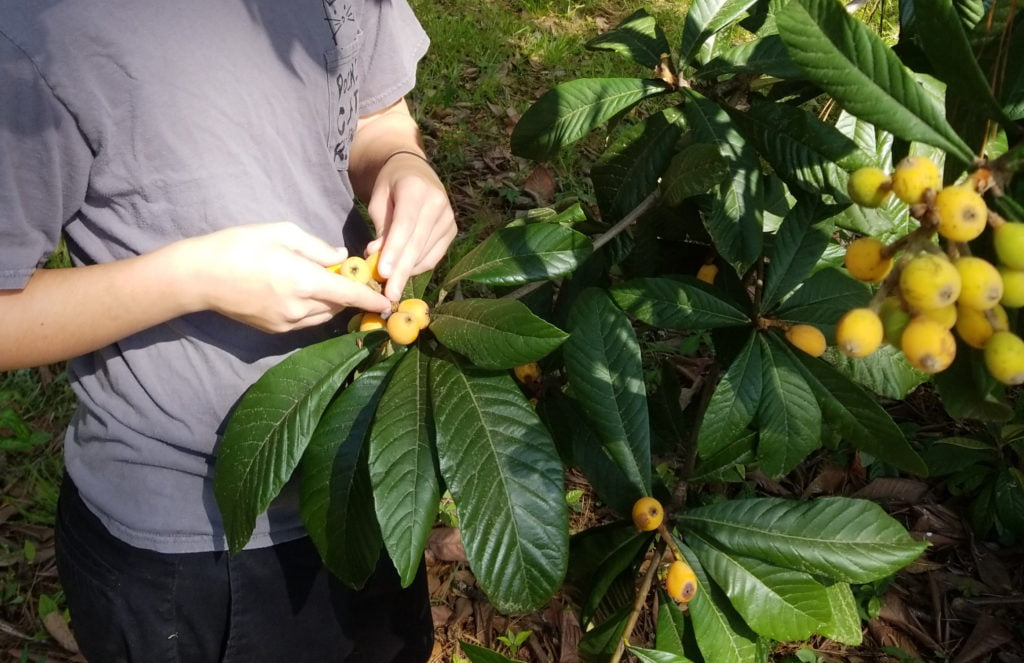
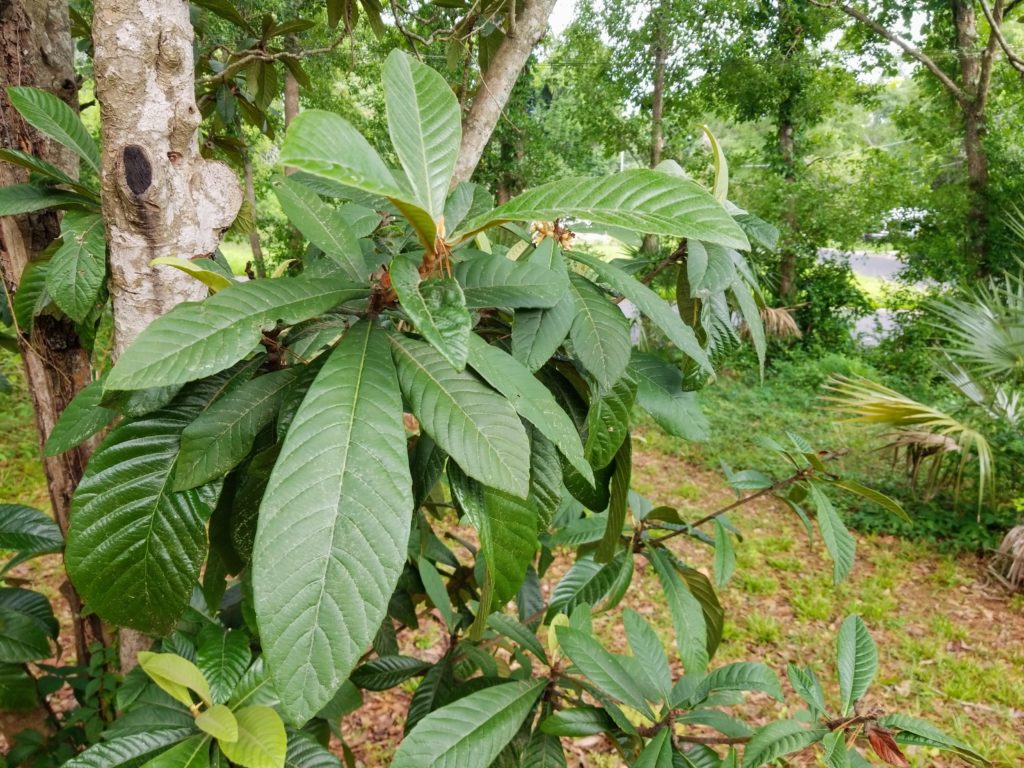
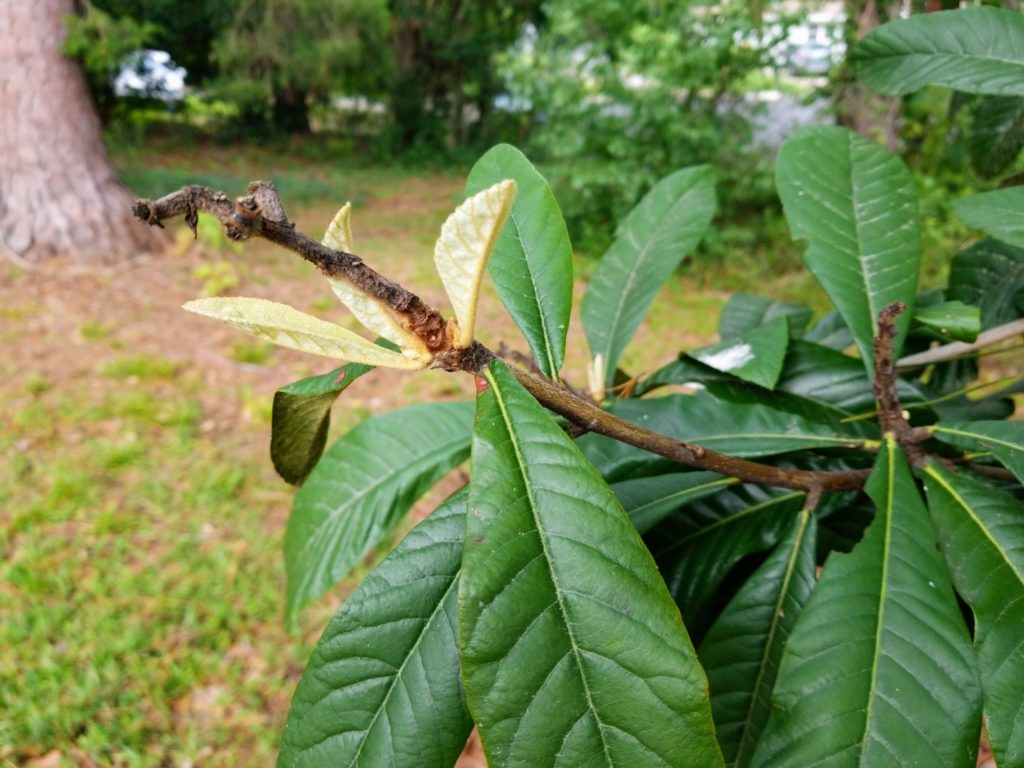
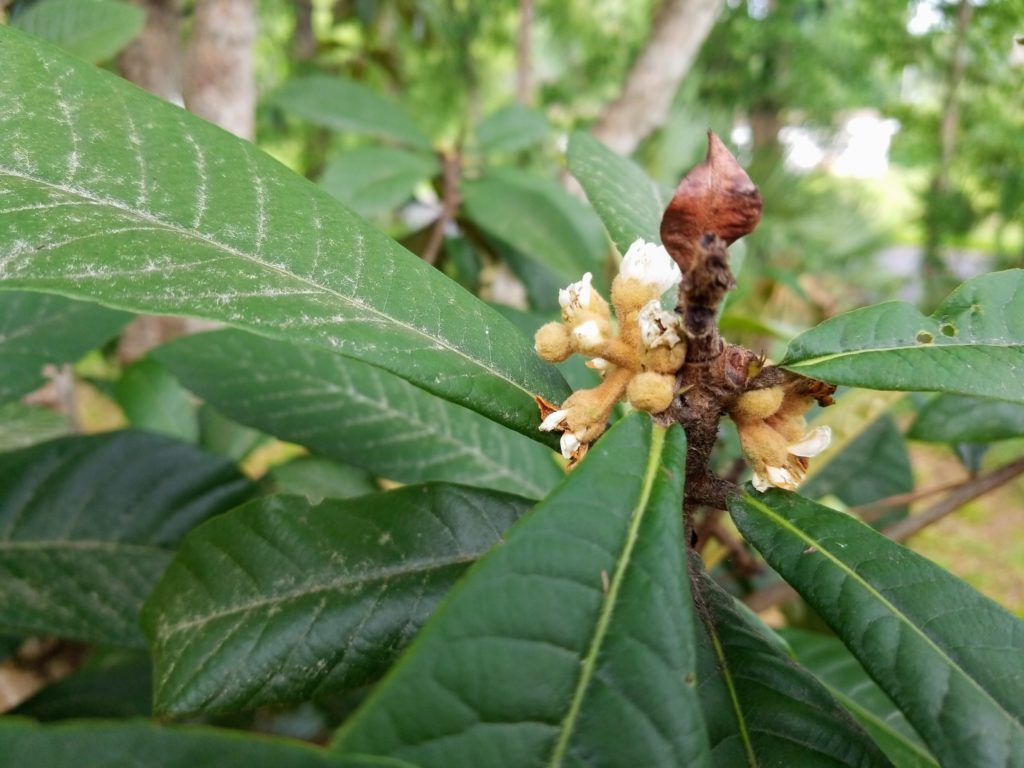
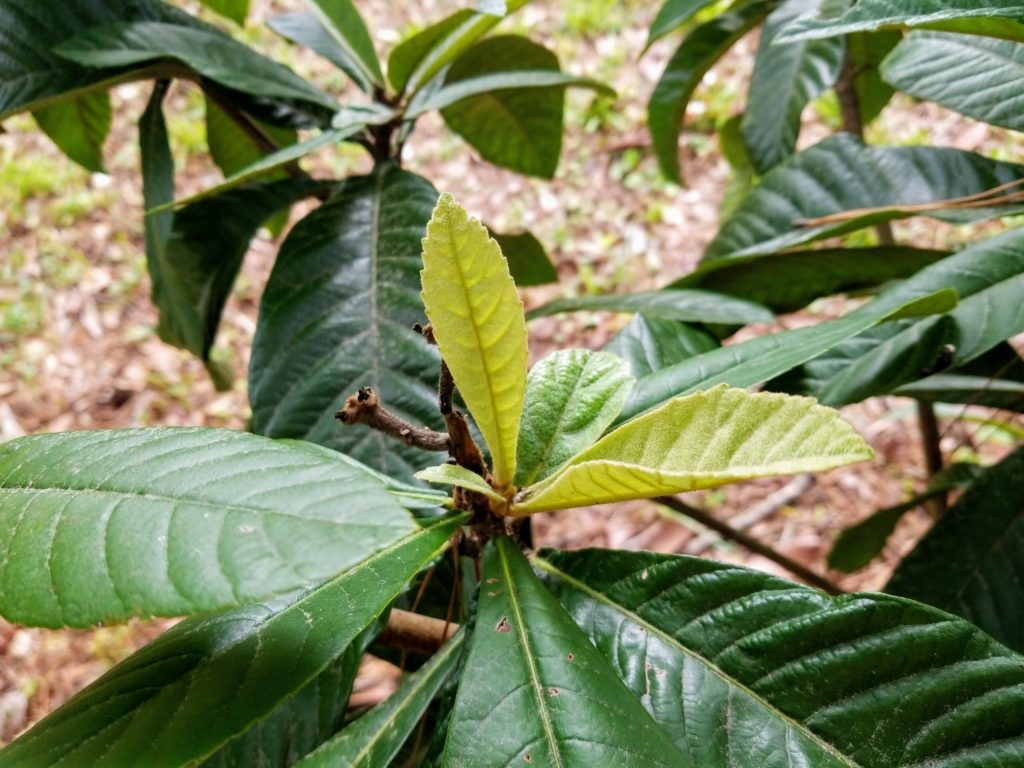
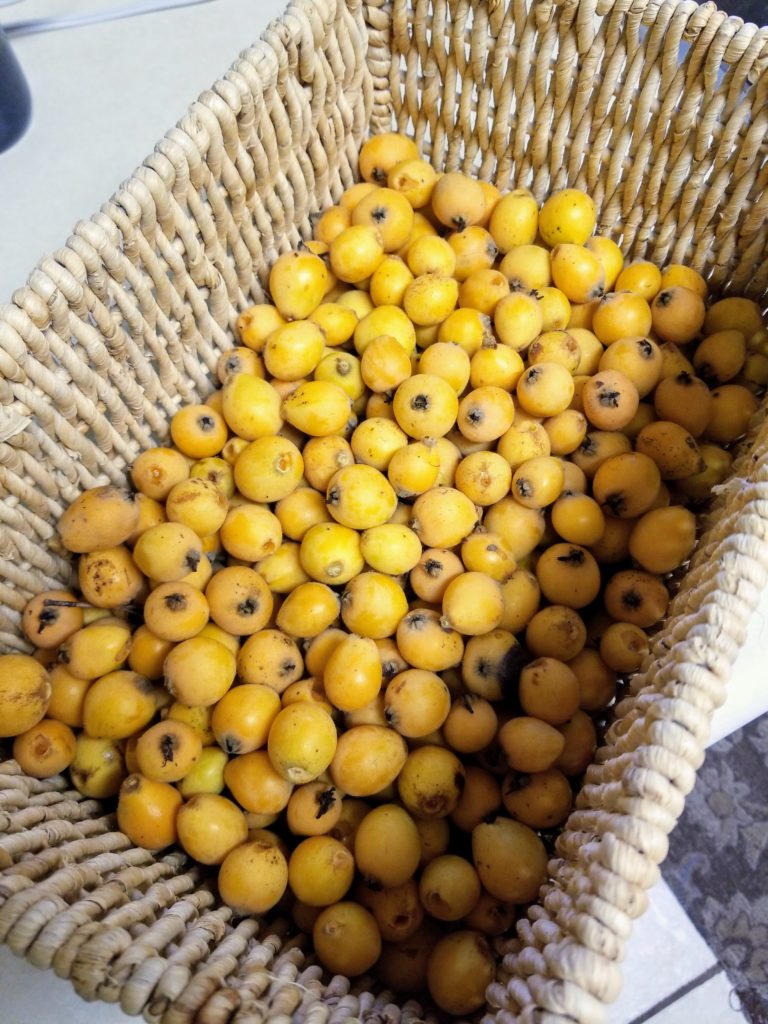
Loquat trees have leaves all year long, have a short trunk, and may reach 20-35 ft or higher in height. The leaves grow to be 6-8 inches long, are dark green and glossy on the upper side, and are whitish or brown and fuzzy on the bottom.
Flowers are a small cluster of small white flowers that bloom starting in early Winter and develop into fruits between February and May. Loquat fruits are small, round and grow in clusters. Their color varies from yellow to red-orange, depending on the variety. Once the fruits ripen they are quickly gobbled up by squirrels and birds, so it’s important to harvest them quickly!2
Growing
Loquat trees may be grown from seed, but they do not come true from seed, meaning the tree that grows will not be the same as the parent tree They also take 6- to 8-years before flowering and fruiting when grown from seed. Commercial Loquats are grown by grafting pieces onto other types of trees known as rootstock. Loquat trees are widely available at home and garden centers.
Loquat trees should be planted in full sun. Select somewhere away from other trees, buildings and structures, and power lines. Loquat trees may become moderately large if not pruned to contain their size. In areas where there is a chance of spring frost, select the warmest area of the landscape. Loquat trees should be planted in areas that do not flood (or remain wet) after heavy summer rains.3
Medicinal Properties
The fruits and the leaves are anti-inflammatory, and are used to reduce inflammation and are specifically effective on conditions of the lungs and respiratory system such as bronchitis, asthma and cough.
A tincture of the leaves can be used to lower blood sugar levels for those with diabetes. Both a tea or a tincture made from the leaves has an effect on both type-1 and type-2 diabetes.
The leaves have also been shown to have anticancer constituants. Studies specifically with breast cancer have shown the compounds in the plant are effective at combating the disease.
All parts of the tree have been shown to contain antioxidants. The exact antioxidant compounds vary from species to species and across different parts of the tree such as flowers, leaves and fruit.4
Recipes
Loquat Leaf Tea
Pick new green leaves that are between 2 and 4 inches long. Scrape the hairs from the underside and rinse the leaves in cold water. The hairs can irritate the throat. Once prepared, the leaves can be used fresh or dried.5
Cut the leaves into pieces around a ½ inch each. If dried, store excess in an airtight container. If fresh, use right away.
Quick method:
Best with dried leaves
Makes two cups
- Add one tablespoon (5 grams) of dried loquat leaves to a pot or cup.
- Add 2 cups of near-boiling water.
- Brew for about 10-15 minutes.
- Strain and serve hot, or cold.
Traditional method:
Fresh or dried leaves
Makes four cups
- Add 2 heaping tablespoons of loquat leaves to 4 cups of cold water.
- Heat to a full, rolling boil.
- Turn heat down and let simmer for 5 minutes.
- Turn heat off and cool down for 10-15 minutes.
- Strain and serve.
Loquat Jam
Loquats are a fruit that is naturally high in pectin, the compound that makes jams and jellies become firm. So making loquat jam is a bit easier than many other fruits. Here are a few recipes to check out.
Sources

